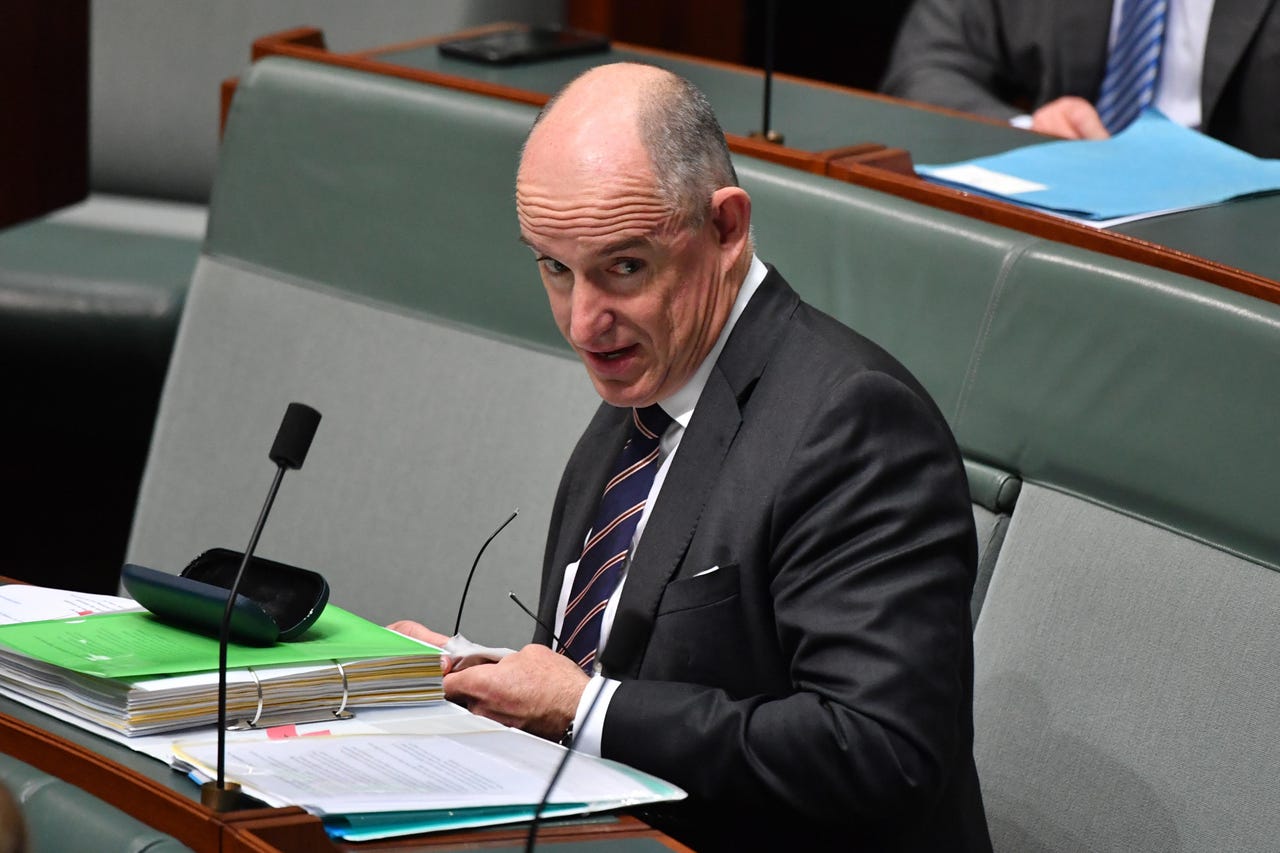Australian government's major IT shops to help others with cybersecurity


Stuart Robert during Question Time in the House of Representatives at Parliament House in March 2021
The federal government might be finally letting go of its "every agency for itself when it comes to cybersecurity" mantra, signalling on Wednesday its intention to have Canberra's bigger agencies provide support to others.
"We know that certain agencies cannot compete for skills and resources in the marketplace and we must develop alternative ways for meeting their needs," Minister for Employment, Workforce, Skills, Small and Family Business Stuart Robert said.
The former Minister for Government Services revealed the government is looking to establish three "Cyber Hub" pilots that will see departments such as Defence, Home Affairs, and Services Australia provide cyber services for "those agencies that cannot match their breadth and depth of skills".
"We can see a future where such hub models may be established for other types of scalable services, not just cybersecurity," he said. "This may include broader ICT functions -- such as secure email, or corporate services -- such as finance or HR."
The decisions will be informed by the Whole of Government Architecture and the Digital Review, which are both projects underway by the Digital Transformation Agency (DTA).
The DTA, now back under the Department of Prime Minister and Cabinet and with the revised mandate to be responsible for "Whole of Government ICT governance, strategy, policy, architecture, processes, and procedures", is going to provide Robert with a "complete picture of what we have, what we need, what we must invest in and by when" as part of the creation of the Whole of Government Architecture.
"I have tasked the DTA with developing a Whole of Government Architecture that will map out all the strategic capabilities that we require as a government, including existing assets and any gaps we need to address," he said.
"The Architecture will also account for the age and complexity of existing systems and allow us to start managing the lifecycle of projects."
Must read: There are 84 high-cost IT projects underway by the Australian government
Similarly, the DTA is conducting a Digital Review, which Robert touted as giving the government a clear picture of the capabilities of agencies, such as what levels of skill exist, at what levels of maturity, and how different agencies are currently performing in the delivery of their roles.
"Once completed in the period ahead, we will have the ability to bring together the system view of the Whole of Government Architecture and the agency capacity view of the Digital Review, to understand how we start planning the future at enterprise scale across whole of government or whole of nation," Robert believes.
Meanwhile, the "Integrated Investment Approach", he said, will enable the government to make the right investment decisions.
"Right now, digital and ICT investment can be a bit like the hunger games, where government often finds itself with investment proposals that are presented as urgent or critical, but with limited opportunity to consider the broader strategic context of those proposals," he said.
Robert also took the opportunity to highlight his vision for myGov, the federal government's online portal for accessing government services.
"Our long-term vision for myGov is to ensure it evolves to become a world leading single national digital platform that delivers simple, helpful, respectful, and transparent services that meet the needs and expectations of all Australians," he said, paying homage to the pipedream he delivered to the National Press Club in July.
"We will progressively provide new functionality, delivering personalised information and services as we strive for an ever more integrated and improved customer experience.
"We're building the future front door for government -- openly and transparently."
In March last year, myGov crashed when many Australians tried to determine if they qualified for support from the country's Centrelink scheme.
Robert was quick to claim the portal suffered a distributed denial of service (DDoS) attack while simultaneously blaming the outage on legitimate traffic that pushed past the 55,000 concurrent users limit set by government.
The tech-savvy minister also took the opportunity to highlight his "big, hairy, audacious goals" -- or "B-HAGs" as his speech writers declared.
"Government, especially the federal government, delivers an enormous amount for Australians, but a lot of it is under the hood and a lot of it is tech based," Robert said.
"And it is not at all 'sexy'.
"Me and my colleagues' job is to not make government 'sexy', but to make government services simple, helpful, respectful, and transparent."
Robert touched of the Digital Transformation Strategy, which has the goal of making all government services available digitally by 2025. He said that "significant progress both in delivery, as well as our capability and maturity" has been made as the halfway mark approaches.
LATEST FROM CANBERRA
- Australia's NDIS goes live with first phase of digital transformation program
- Labor calls Australia's COVIDSafe app a 'turkey' on anniversary of controversial app
- Services Australia penalised for breaching privacy of a vulnerable customer
- Critics label data-sharing Bill as 'eroding privacy in favour of bureaucratic convenience'
- Canberra has a plan to make Aussie laws 'technology neutral'